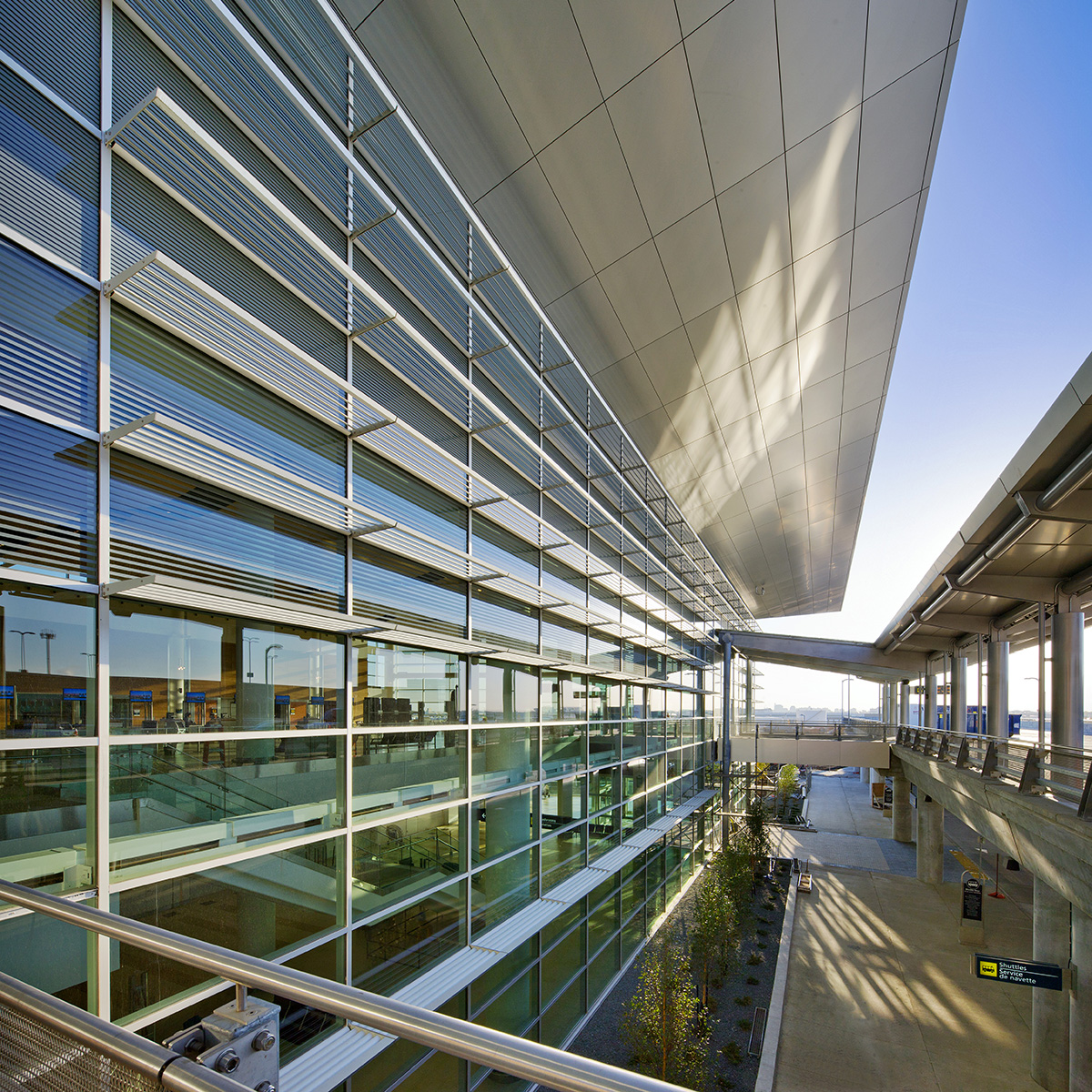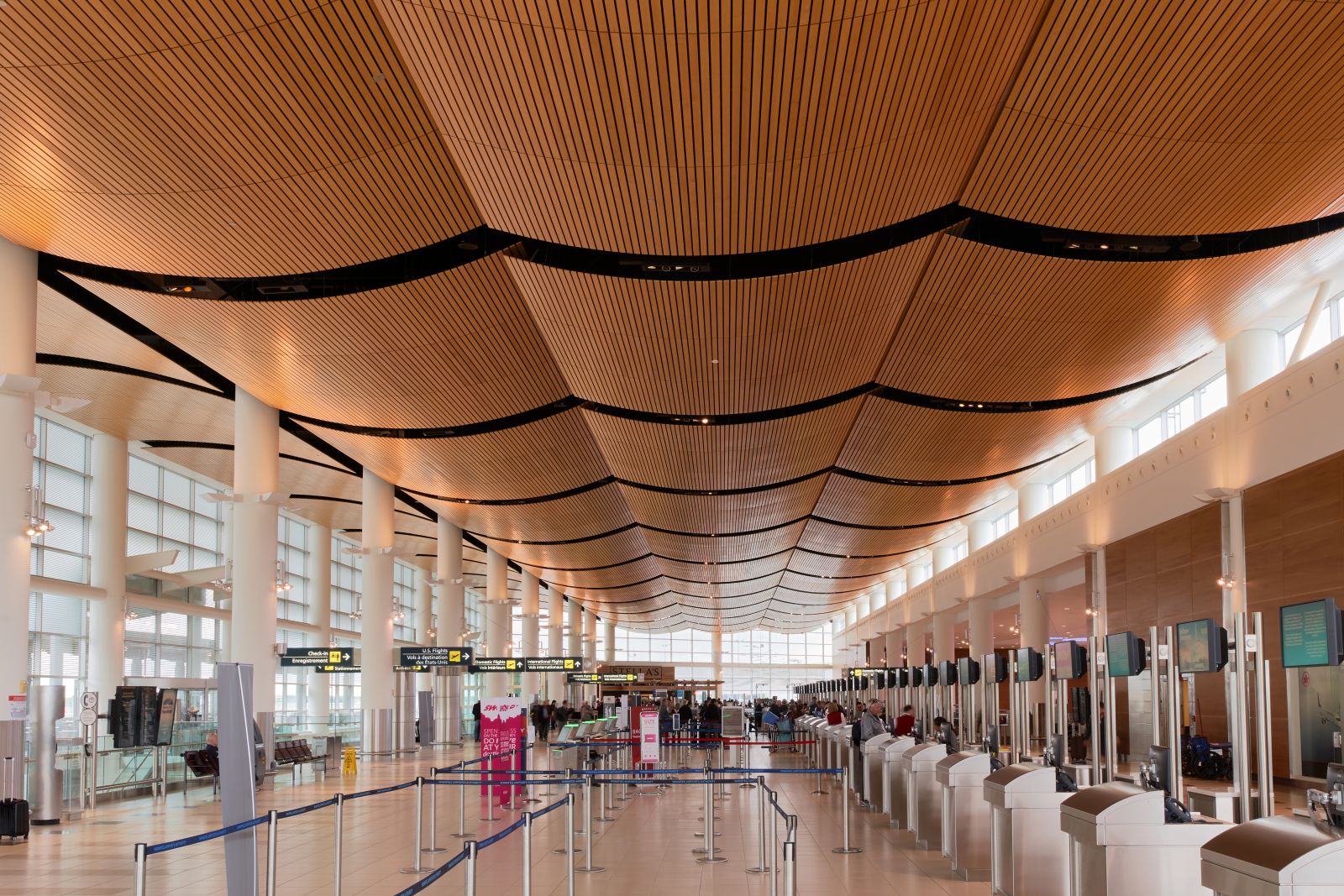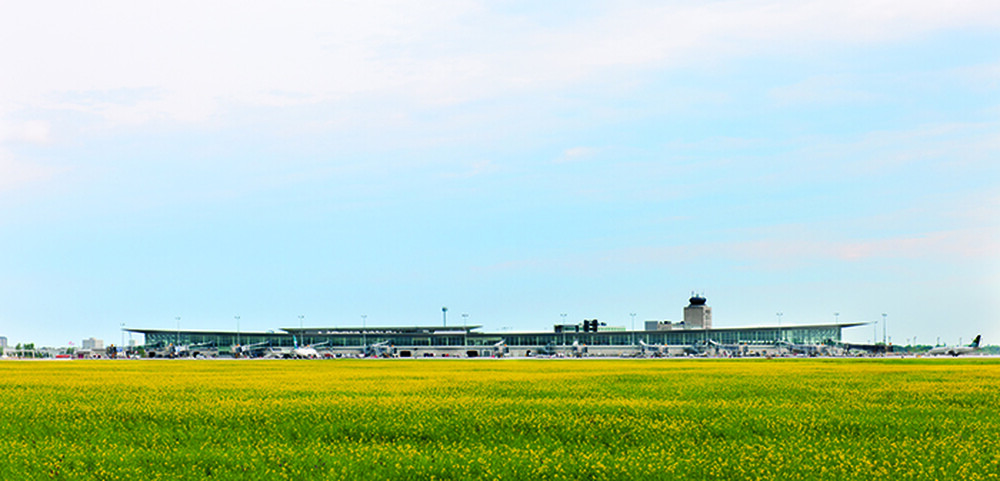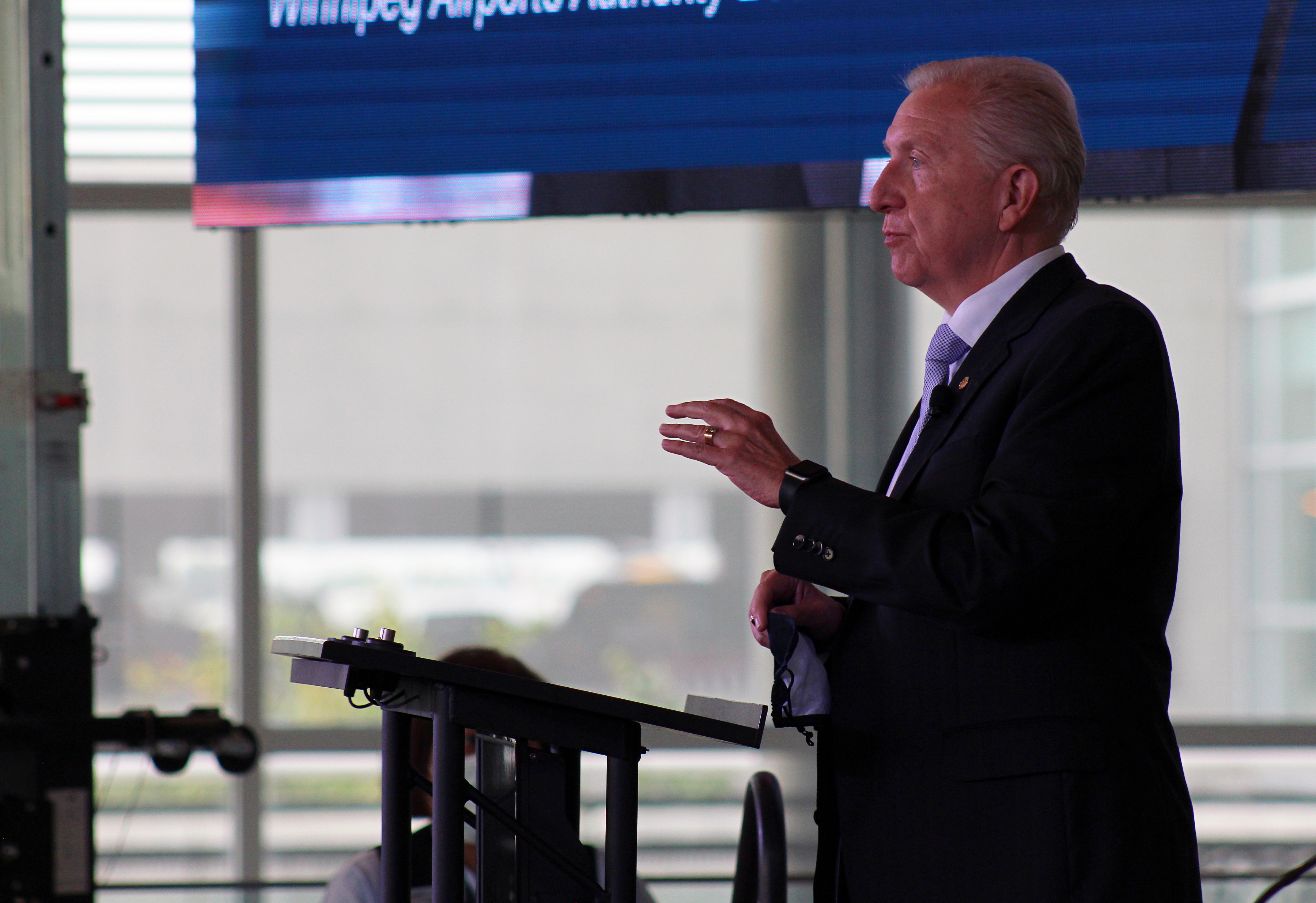Nestled within the prairie landscape, Winnipeg Richardson International Airport is home to one of the most earth-friendly terminals across the country. In fact, it was the first airport terminal in all of Canada to achieve LEED certification. The building landed the recognition thanks in large part to the sustainable features incorporated into its design including:
- A displacement ventilation system which only heats or cools the lower ten feet of a space so the least amount of energy is used to keep travellers, visitors and employees comfortable.
- A heat recovery system to recover heat generated from equipment rather than it being wasted.
- High-performance exterior walls and roof which insulate the building more efficiently.
- More than 10,000 square metres of glass windows to let in natural light. Sensors were also installed to ensure lights turn on only when needed.
- Plumbing fixtures were selected based on their ability to use less water.
Nearly a decade after the terminal opened, here’s a few of the ways Winnipeg Airports Authority is continuing to reduce the facility’s energy consumption.

A New Plan
After years of working to minimize the airport’s impact on the environment, a new plan was prioritized by WAA to further manage its overall carbon footprint. The Strategic Energy and Carbon Management Plan, which was launched in 2020, outlines short and long-term reduction strategies. The plan also allows WAA to compare emissions to baseline results as it implements projects and continues to develop the airport campus to serve the community.
School of Sustainability
A WAA employee is taking on a unique role at the airport, currently studying to be an in-house Energy Manager. As a long-time member of the Facilities team, this individual has a thorough understanding of how the terminal’s building system works and will quarterback carbon reduction initiatives. The Energy Manager will work alongside a broad network of internal and external supports to conduct regular energy assessments, develop targets and ensure projects get completed.
Knowledge is Power
Monitoring technology is being used to help identify inefficiencies and opportunities to fine tune energy use. An analytical device was installed in the terminal to provide comprehensive data of the building management system to ensure the airport is meeting its green goals. A state-of-the-art utility metering system will also be added to better define where energy is being used the most.
Say Watt?
To heat a 51,500-square-metre airport terminal, you need a completely separate facility. The Central Utilities Building, located next to the Economy Parking Lot, supplies heat and hot water for the terminal. Inside this space, plans are well underway on an innovative and efficient heating project that will reduce the number of boilers needed in half.
Additional measures are also being taken to upgrade lighting throughout the terminal to LED and replace equipment aging out with greener options. Combined, all of the energy reduction projects already in motion are estimated to lower the airport’s greenhouse gas emissions by 700 tonnes per year – the equivalent of taking 150 vehicles off the roads or planting 7,500 trees.

Combatting Climate Change Collectively
Protecting the earth takes a global effort. To help implement projects and programs aimed at reducing its carbon footprint, WAA has received funding from Natural Resources Canada and Efficiency Manitoba. The airport has also partnered with environmental performance and management organizations, including Demand Side Energy and CopperTree Analytics, to identify efficiencies and develop ways to achieve targets.
Within the organization, several different departments, such as the Environmental, Facilities and Infrastructure teams, are working together to reduce energy consumption. It’s all part of WAA’s commitment of being a responsible partner within our community by protecting our environment for future generations to enjoy.



